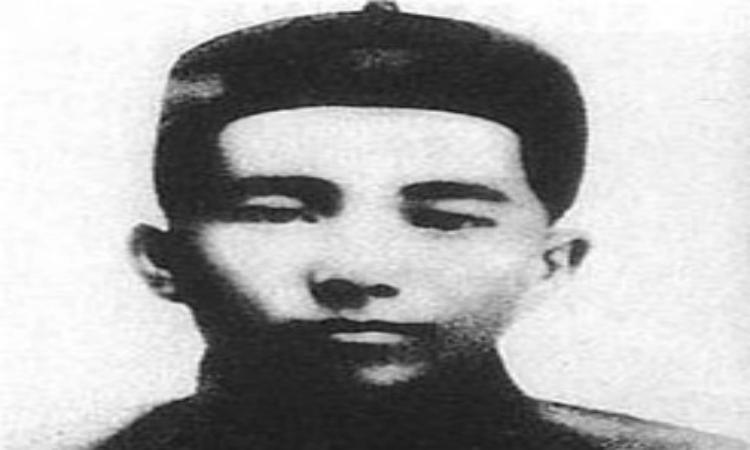- Source: Internet
- Author: Unknown Author
- Time: 2025-04-08
- Visits: 535
Gu Zhenghong is a renowned labor figure and a pioneer of the workers' movement in modern Chinese history.

Gu Zhenghong was a worker in a Shanghai textile mill. On the eve of the May 30th Movement, he, together with Liu Hua, Deng Zhongxia and others, organized workers' strikes, which dealt a heavy blow to the arrogance of the imperialists. On May 15, 1925, Gu Zhenghong organized his fellow workers to fight against Japanese capitalists. The Japanese capitalists opened fire on the workers. Gu Zhenghong was shot several times and fell in a pool of blood, and more than ten other workers were also injured, resulting in the "Gu Zhenghong Tragedy". The sacrifice of Gu Zhenghong aroused the public indignation of the people in Shanghai and even across the country, becoming the fuse of the May 30th Movement, triggering a nationwide upsurge of the anti-imperialist patriotic movement, and promoting the development of the Chinese workers' movement and the cause of national liberation.
In February 1925, more than 40,000 workers from 22 Japanese textile mills in Shanghai launched a major strike to oppose the unreasonable dismissal of workers by Japanese capitalists. Gu Zhenghong joined the trade union picket team and "guarded the passages" at the main traffic arteries along the Suzhou River in the western part of Shanghai to dissuade workers from going to work. He also participated in the strike agitation team and went to the No. 9, No. 14, No. 15 and other mills of the Internal and External Cotton Company to encourage workers to participate in the joint strike. Breaking through the obstruction of the factory owners and foremen, he enabled many fellow workers to join the strike. In addition, he actively participated in activities to organize trade unions. During the strike, together with the leaders of the secret trade union groups in each factory, he mobilized and organized workers, conveyed the instructions of the club, distributed leaflets, and helped solve the living difficulties of the striking workers. After the strike ended, under the organization of him and others, trade union organizations were established in the No. 11 mill of the Internal and External Cotton Company and other Japanese-owned textile mills, and the number of members increased significantly. Due to his active performance, Gu Zhenghong joined the Communist Party of China after this strike.
After the victory of the February strike, the Japanese capitalists treated the workers even more brutally. In early May, the trade union and the club decided to adopt the method of rotating slowdowns to fight against the Japanese capitalists. On May 14, the Japanese factory owners dismissed several worker representatives from the No. 12 mill and also beat the workers. On May 15, after receiving the meeting notice from the trade union and the club, Gu Zhenghong, regardless of rest or food, threw himself into the new struggle. At noon that day, the day shift workers of the No. 7 mill were deceived by the factory and left the factory on the pretext that they would be paid half of their wages during the shutdown period. Then the factory closed the gate and didn't mention the payment of wages at all. After learning about this, Gu Zhenghong invited several activists, mobilized the night shift workers to insist on going to work and to gather at the factory gate in advance. At around 5:30 pm, the workers gathered at the factory gate and prepared to enter. The Japanese roll-caller blocked them and said that there was no yarn in the factory and asked the workers to go back. Gu Zhenghong led the workers to shout, "Ask the manager to come out and talk! We will never go back without getting our wages." The Japanese staff said that the day shift workers would not be paid either. The workers were very angry, and the Indian policemen, Japanese roll-callers and spies at the factory gate were so scared that they slipped into the factory. The workers rushed towards the factory gate shouting the slogan "We want to go to work". Gu Zhenghong led the workers to pick up the shuttle bats for self-defense and took the lead in breaking open the factory gate. Facing the enemies such as Kawamura, the Japanese manager with a gun, Gu Zhenghong stood bravely at the front of the workers' team and led his fellow workers to shout slogans such as "Oppose the oppression of workers by the Japanese" and "It is not allowed to deduct wages". Kawamura fired at Gu Zhenghong, and the bullet hit his left leg. He glared at the enemy and shouted with pain, "Fellow workers, let's unite and fight!" Kawamura fired several more shots, hitting his abdomen and other parts. He tightly grasped a small tree beside him, stood firmly and called on the workers to persevere in the struggle. Finally, he fell in a pool of blood and later died due to his serious injuries after ineffective rescue.
The sacrifice of Gu Zhenghong aroused the public indignation of the people in Shanghai and even across the country, becoming the fuse of the May 30th Movement and promoting the development of the Chinese workers' movement and the cause of national liberation. He bravely stood up to fight against imperialism and reactionary forces for the interests of the working class and the dignity of the nation. His heroic deeds and dedication have inspired countless Chinese people and have become a monument in the history of the Chinese workers' movement.
